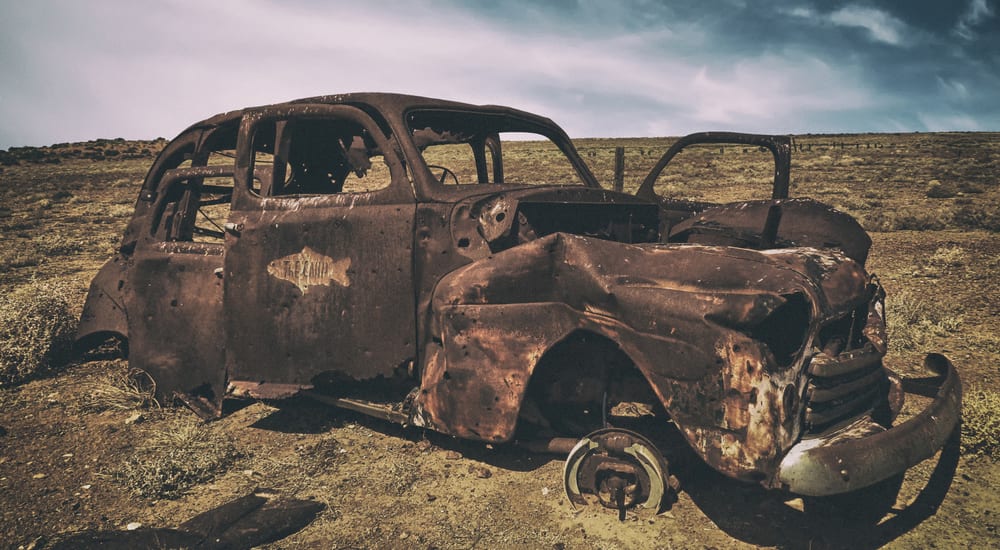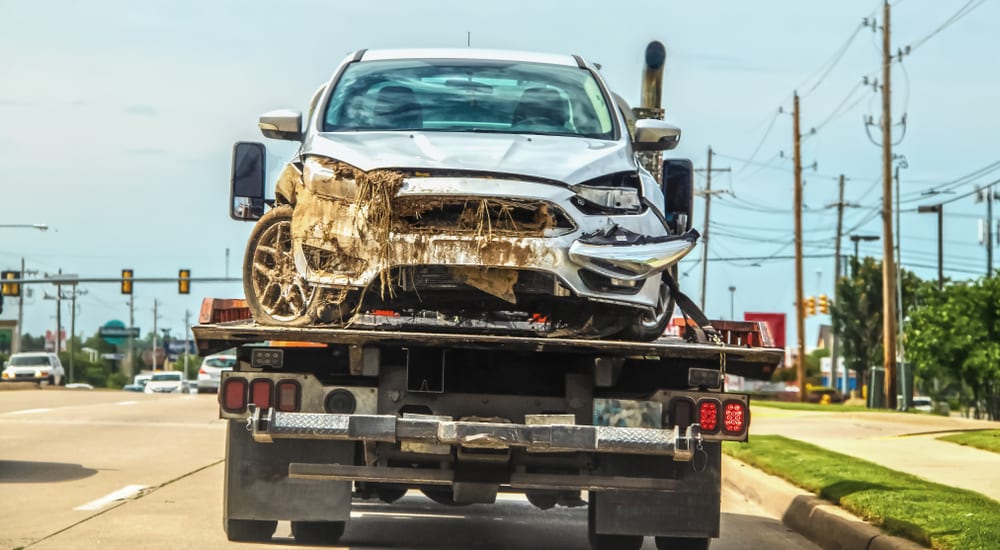There’s no reason to distrust the quality of the used vehicles that come from a reputable dealership, but there may be a situation where you’ll have to purchase from a private party. In these situations, you’ll want to be especially aware of any issues that may accompany the targeted car, although this can be easier said than done. It’s hard to recognize whether that small patch of rust or the wet spot on the interior’s floor is an isolated issue… or something much worse.
Some issues with cars are more difficult to recognize, but that doesn’t mean you shouldn’t do your own self-inspection. You’ll find several common issues that accompany used cars below, and when you’re ready to shop for used cars, you’ll know what you should be looking out for…
Flood Issues
Whenever a giant storm hits an area, there’s a good chance that a handful of vehicles will be totaled. Still, some dealers will jump on the chance to refurbish these cars, ripping out the upholstery and replacing it with dry carpeting. Good as new, right? Wrong.
These flooded vehicles have significantly worse issues than wet seats. If the targeted car’s mechanics were completely flooded, you may find yourself with several issues down the road. While a flooded engine may work sporadically, you’ll probably have to replace the unit before long. You could also face issues with the oil, and it’s important that you fix this soaked unit as soon as possible.
How can you tell if a used car has been damaged by water? Moisture in the cabin is a clear indication, although a seller likely replaced any moldy or wet materials. In that case, check for inconsistencies in the upholstery’s design. These cars feature consistent patterns, and any discrepancy could be an indication that the interior was ripped up. You should also check any of the vehicle’s features that would be powered by a battery, like the lights. If these functions are operating inconsistently, there’s probably an issue lying under the surface.
If you’re still unsure, use the ‘sniff and eye’ test. Check every nook and cranny of that targeted vehicle for any giveaways for water damage. If your nose senses a musty smell, that should be a major indication.
So ultimately, why shouldn’t you trust these flooded vehicles? There’s a good chance that these cars have been rebranded and sent to another part of the country, making them particularly difficult to track. That’s what happened following the devastating floods in Houston earlier this year.
“Unfortunately, some of the flooded vehicles may be purchased at bargain prices, cleaned up, and then taken out of state where the VIN [vehicle identification number] is switched and the car is retitled with no indication it has been damaged,” the National Insurance Crime Bureau said in a statement (via Jillian MacMath of AccuWeather.com).
While you may appreciate the price, you won’t appreciate the hassle. It’s not worth your money or effort to fool around with these flood-damaged cars.
Rust
Rust is another indication of flood damage, but this common problem isn’t specific to only those specific totaled vehicles. The orange-brown corrosion can pop up on the exterior of any vehicle, and it’s often an indication that the vehicle has been out in the elements for several years. That’s not necessarily a bad thing (besides the negative aesthetics), but there could be more sinister issues hiding under the hood.
Rusted wiring could compromise your entire vehicle’s mechanics. Some of your car’s wires are durable and designed to deal with the elements, but some are much more brittle and vulnerable. These are the wires you’ll want to be checking for, assuring that they’re devoid of any damage.
It can be tough to catch a patch of rust on a car, especially since enthusiasts are so skilled at covering up the spots. Of course, if it’s only an aesthetics issue, the removal of the rust should actually be appreciated.
Frame
Some drivers underestimate the importance of their vehicle’s frame, as all of the aspects combine to provide maximum support. Furthermore, it’s the frame that absorbs the majority of the impact in a collision, and modifying the design could make the driver and passenger more susceptible to injury
While any unnatural bends in the vehicle’s body is a clear indication of damage, it won’t give you the whole story. A mechanic should be able to tell if the frame is in good shape, and a vehicle history report will let you know if the targeted car has ever been in an accident.
If you come across a car where the frame has either been modified or damaged, stay away. The vehicle’s structure is one thing that shouldn’t be played with. Besides providing you with maximum protection in case of an emergency, the frame also affects how the vehicle operates. You may be dealing with an ineffective car if even one minor design element is out of whack.
Leaks
You know the likely signs of a leak, as the puddle underneath your vehicle indicates some kind of issue. However, it can be tough to pinpoint where that leak is coming from, and determining this issue could ultimately impact your decision of whether you should buy.
If the leak is coming from the engine, you should initially check the oil levels via the dip stick. If the level continues to decrease, you may have found your issue. There are several other warning signs that indicate an engine leak, like blue smoke coming from the tailpipe or the smell of burnt oil following a drive. Leaking oil will also have more of a brown color, compared to some other likely culprits.
If the puddle of liquid has a red-like hue, there’s a good chance that it’s transmission fluid. Meanwhile, if the leakage is green or orange, you’re probably eyeing a coolant leak.
You’ll also want to make sure you check your transmission fluid, as repairing the system can be quite expensive. Check the dipstick to make sure the oil levels aren’t low, and assure that the oil has the standard, clear consistency. You should also get a signal via your car’s shifting ability, as it should be able to switch seamlessly without any jerking.
Regardless, you’ll want to get these leaks checked out. Even if it’s coolant or moisture coming from your air conditioner, the liquid can leak onto hoses or seals, causing them to degrade. If the leak is coming from the engine, that increases the likelihood of a fire or a sudden failure.
If you come across a used car with a leak, it’s a good indication that the car should be avoided. Leaks are generally easy to fix, as a number of additives will repair the seals. They can also be repaired by tightening several bolts, and if need be, a quick trip to the mechanic should be inexpensive. If the seller of the vehicle is actually a reputable source, they wouldn’t be dealing cars with leaks.
One thing is clear: you can assure that the targeted used car is reliable, problem-free, and safe by taking it into a trusted mechanic. They’ll be able to recognize any potential issue that should steer you away from making the purchase.








